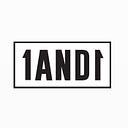Is counting calories really worth it? Some questions always seem to drum up controversy:
- Which came first, the chicken or the egg?
- Why did the chicken cross the road?
- Is counting calories actually the right way to go?
CICO, or “calories in” vs “calories out,” is a hotly debated topic in the wellness industry. If you aren’t familiar with the term, it’s basically a way to look at energy balance in the body. Take in more calories/energy than you burn, and the result is weight gain. Take in fewer calories/energy than you burn, and the result is weight loss.
Counting Calories To Lose Weight
One side of the conversation says that this is an oversimplified equation. As such, it doesn’t take into account things like hormonal imbalances and other health conditions, while the other side believes that it’s pretty straightforward. Like most things in life, however, the truth is somewhere in the middle. Neither viewpoint is completely right or wrong. But one thing they can both agree on is this: counting calories as we know it is highly flawed.
Counting Calories In Food
We measure the energy that we get from food in calories. Our bodies convert these calories into heat so that we can function on a daily basis. You might have been living and dying by your calorie count on your personal wellness journey. However, it’s important to keep in mind that calories are an imperfect science. There are so many factors that go into play that getting an accurate number can be much more difficult than you think.
For example, the calorie count that you read on your label or in a database is an average or estimation. The actual count of the large apple you had as a snack or the filet mignon you had for dinner last night can actually be much lower or much higher than indicated. We might also not all digest the same amount of calories from these foods. The way that food is cooked or prepared, the specific metabolism of the individual, the presence of specific gut bacteria, and other factors can all play a role in the number of calories absorbed.
On top of this, we are human — and because of this, we make mistakes. Ever attempt to enter a meal in your MyFitnessPal app, just to sit there completely confused as to whether it was 1 cup of brown rice or ¼ cup that you actually ingested? Our ability to eyeball portion sizes is filled with potential errors, especially when it comes to that complicated salad with dozens of ingredients. Plus, pulling out your phone every time you have lunch is a bit tedious.
There are also a ton of pros to calorie counting, and it works for a lot of people. Macro counting can also be highly effective, but can also be difficult to keep up with. Some people might easily be able to identify what 30g Of protein looks like, while others may not be able to do so without feelings of anxiety or confusion. If you are someone who’s on the fence about which style or modality works best for you, check out this article comparing counting calories and counting macros.
The Hand-Guide Portion Control Method
All you need for this method of portion control is your palm. I got this amazing trick from Precision Nutrition, a well-respected company in the health and wellness industry. They help a wide range of individuals — from professional athletes to stay at home soccer moms — make lifestyle changes easier and more sustainable.
Parts of the Hand
They advocate using your hand size as a guide to help with portion control. It’s pretty simple and works like this:
- Palm: determines the size of your protein portion.
- Fist: determines the size of your veggie portion.
- Cupped hand: determines the size of your carb portion.
- Thumb: determines the size of your fat portion.
Consequently, your entire hand serves as a portable measuring device. For men, it’s recommended that you double the serving sizes listed above. Like any form of nutrition planning, this is simply a starting point that may or may not have to be adjusted. Stay flexible and be willing to make changes based on hunger level, satiety, specific goals, etc.
Work Towards Your Fitness Goals
By simply using outcome decision making (in other words, how is the current regimen working towards your goals?), you can adjust the portions and observe the changes that ensue. For example, if you are trying to gain weight and your number has been stagnant, you can add a “thumb” of fat or a “palm” of protein to your meals. If you are trying to lose weight and your progress has stalled, you can experiment by removing a “thumb” of fat or a “palm” of carbs from your meals. This isn’t an exact science (like calorie counting), but if you eat intuitively and keep track of your results, it can provide a less stressful way to navigate your fitness goals while maintaining your sanity.
Use a Food Journal to Count Calories
No matter what method you use on your weight loss journey, it’s absolutely important that you keep a food journal. You manage what you monitor. If you want to discover trends, find what is or isn’t working, and keep discovering micro changes that could lead to major results, then you should be keeping track. One of the best food journals on the market is the “Daily Food Journal” on Amazon. It’s simple and an absolute fan favorite (with a near-perfect rating). Find out more about it here.
*This post may contain affiliate links to the products and services that we talk about.
